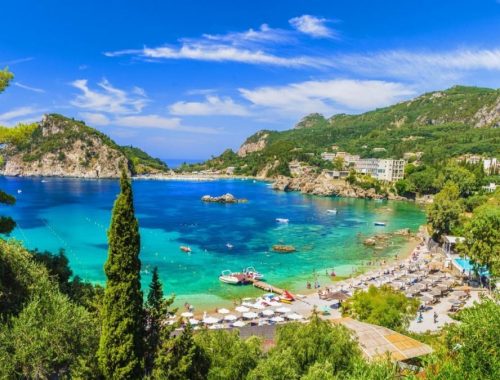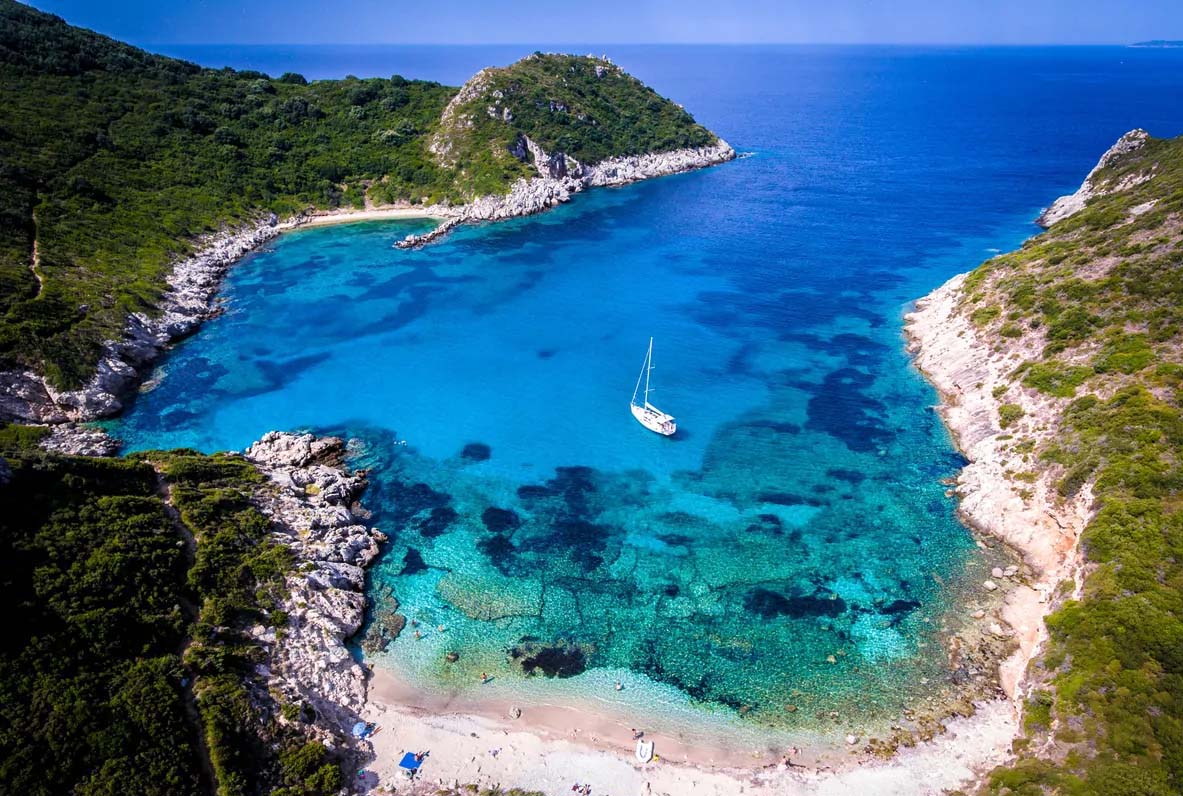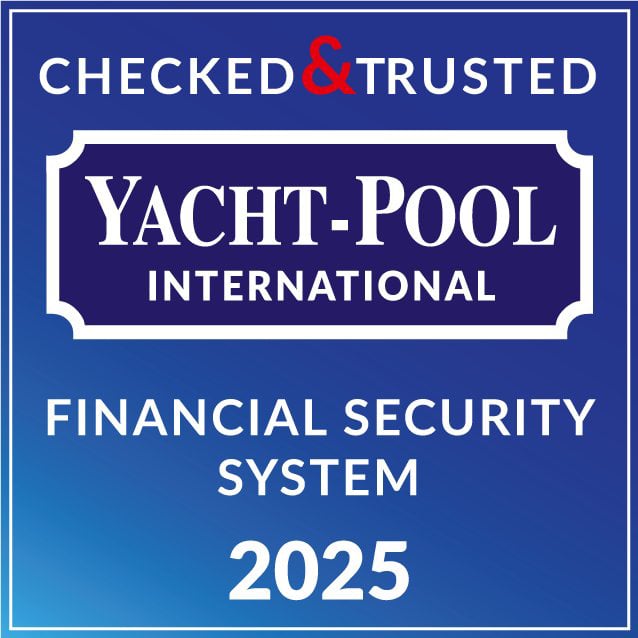
Sailing around the island of Corfu – the pearl of the Ionian Islands
The sea is crystal clear, the atmosphere is relaxed, and there are sheltered bays and heavenly beaches. Greece’s Corfu is the ideal location for a sailing cruise of a lifetime. Corfu, also known as the “Pearl of the Ionian Islands,” is one of the largest Greek islands and unquestionably one of the most cosmopolitan due to its strong identity, which over the years has drawn merchants and artists from all over the world as well as Venetian, English, and French sailors. Each of them has left their imprint on this magical place, both in architecture, cuisine, and tradition, in a charming mix that instantly captivates anyone who lands on its shores.
You can set sail from Corfu to explore Paxos and Antipaxos, two smaller islands with enticing charm and pristine nature, thanks to the excellent sailing conditions.
Discover the best boat rental offers from Corfu
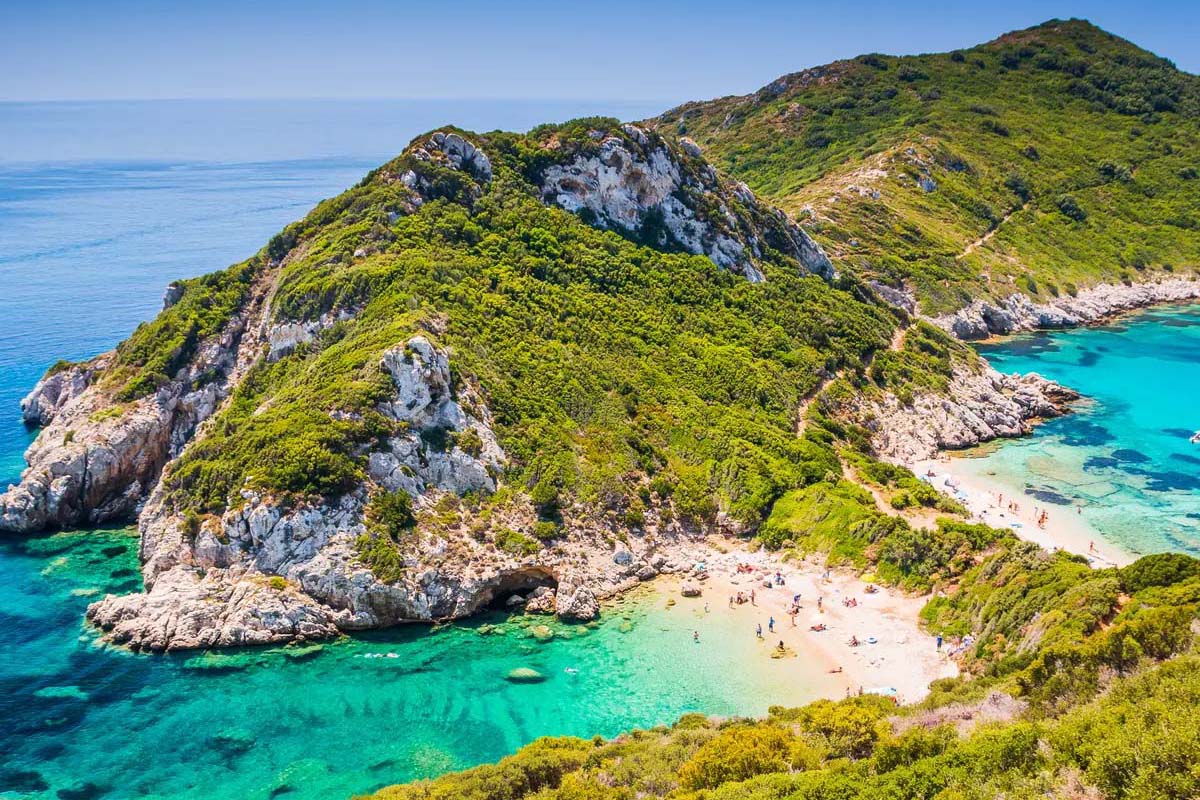
Day 1, Gouvia – Kalami, 7 miles
This sailing itinerary begins at the tourist port of Gouvia, a small village on Corfu’s east coast about 4 miles north of the island’s capital. After embarking and receiving a briefing from the skipper, we leave the mooring and sail for about an hour to Kalami, a paradise bay on Corfu’s northeast coast. We’ll spend the night anchored here. Because of the peculiar shadow on the seabed that can be seen when the sun shines on the turquoise waters, sailors refer to it as the “black pearl.” The water at Kalami Beach is a unique colour due to underground springs flowing from the mountains, while the coast is covered in flat white pebbles. It’s the perfect place to unwind on a sunny day.
Thanks to well-managed tourism, Kalami has been able to maintain a peaceful fishing village atmosphere. Its beauty has also won it some film and television productions, including the British TV series The Durrells, which tells the story of a famous English family who lived in Kalami in a villa called the White House, which is now a charming seaside inn and guest house. Behind the White House restaurant, a lovely path begins that leads to the stunning Yialiskari beach and continues to Agni, a bay with very clear, deep water that is home to several taverns serving regional specialities.
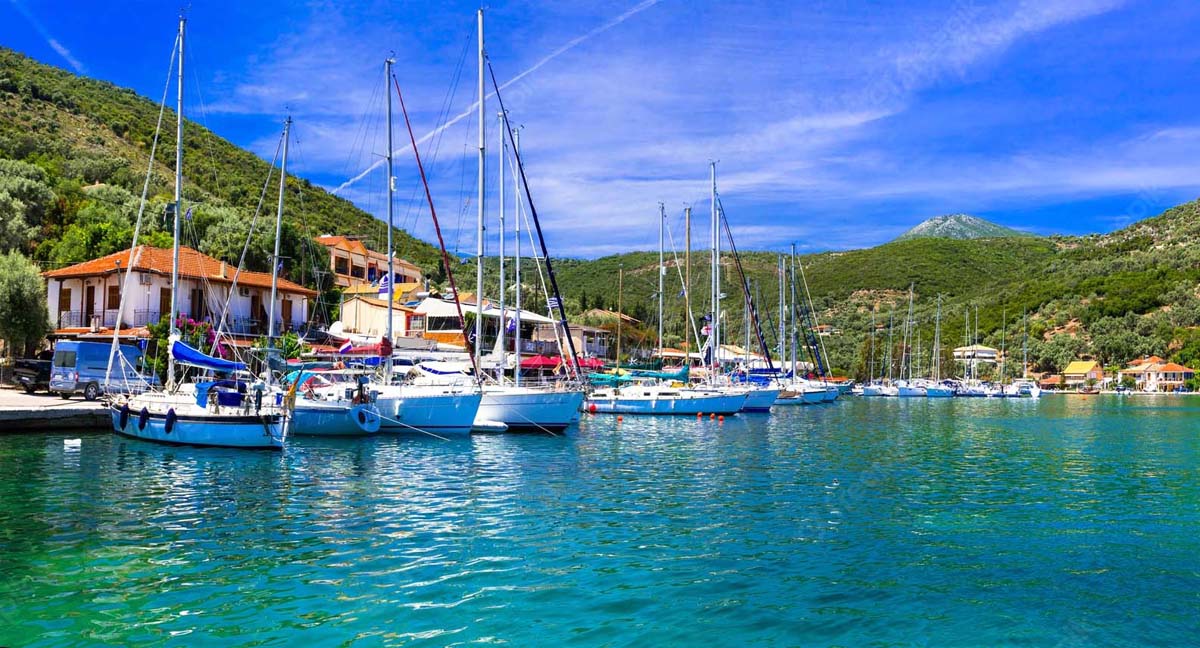
Day 2, Kalami – Sivota, 27 Miles
We leave Kalami and travel to Sivota in the south, a fascinating town close to Igoumenitsa with a string of small islands across the water, some lovely beaches, and intriguing caves to explore. The town marina has a few moorings along the shore, but they can get crowded in the summer. Nevertheless, we have the option of anchoring in front of the town or in the channel between the islands. With the sea and the lush greenery of typical Mediterranean bushes all around, the small port has a few taverns and bars along the coast where we can enjoy excellent iced Greek coffee. The small town of Sivota is charming, but it’s not just because of the scenery; it’s also because it fosters a relaxed atmosphere where life moves slowly and the air smells of the sea and fragrant plants. Yes, this is how a true vacation should look.
Bella Vraka, which can be reached via a dizzying staircase and offers views of a lush green island and a small stretch of beach bathed in warm, clear water, is undoubtedly one of the beaches we must visit in this area. Then there is the serene Mega Drafi beach, where you can only hear the sound of the sea lapping the shore until dusk.
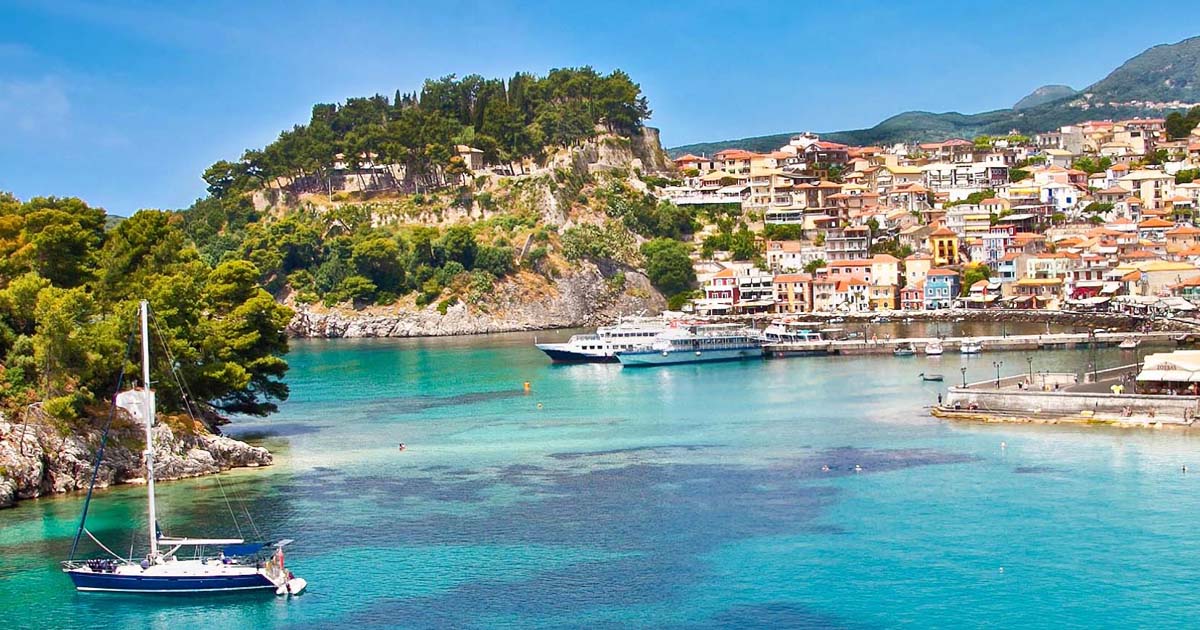
Day 3, Sivota – Parga, 15 Miles
The town of Parga, which stands out on this rocky coastline and is a truly beautiful town, is in our sights as we continue to sail south. We anchor in the bay west of town, which initially enchants with a cascade of pastel-coloured houses set amphitheatrically on the sea. Parga is especially popular among northern European sailors, but it is still relatively unknown to other sailors, who have only recently discovered the magical atmosphere of its narrow streets, ancient buildings, and the typical Greek sea of incredible blue.
Parga is a stunningly beautiful, romantic, and photogenic town. It is regarded as the most beautiful place on the Ionian coast and one of the most beautiful towns in Greece in general. The largest mediaeval fortress from the 14th century, which is a great destination for a fascinating walk into the past, among arched corridors, cannon rooms, and an exceptional vantage point, is undoubtedly the town’s most important attraction.
From Krioneri to Valtos and Lichnos, as well as Sarakiniko, Agia Paraskevi, and Arillas, the coast around Parga is a long series of beaches, some wide and sandy, others smaller and pebbly.
Discover the best boat rental offers from Corfu

Day 4, Parga – Gaios (Paxos), 12 miles
We leave Parga with a heavy heart, heading for our next destination, the islands of Paxos and Antipaxos. On the latter, we spend part of the day anchored off the east coast, swimming in the island’s famous crystal clear water. We eventually arrive on the island of Paxos, which is only three miles wide and seven miles long but has three major harbour villages: Gaios, Lakka, and Longos. Gaios is the main port, where most of the larger commercial boats moor and where Corfu’s hydrofoils and ferries dock. The majority of restaurants, cafes, and shops are located in Gaios.
Gaios is located halfway along Paxos’ east coast. The village is protected by an island in front, and boats can enter and exit from either side. Gaios is a lovely town with opulent pastel-coloured buildings, a bustling square, and a coastline ideal for leisurely strolls. Small bays can be found not far from the centre, which is perfect for those who want to get to the beach as soon as possible.
Due to its central location, Gaios is a good starting point for exploring the island of Paxos. According to Greek mythology, the island, also known as “Passo” or “Paxi,” was created by Poseidon, the god of the sea, when he used his trident to cut off a portion of Corfu to create a secret retreat where he could hide out with his chosen one, Amphitrite. Even to this day, many couples choose this island as a romantic getaway destination.
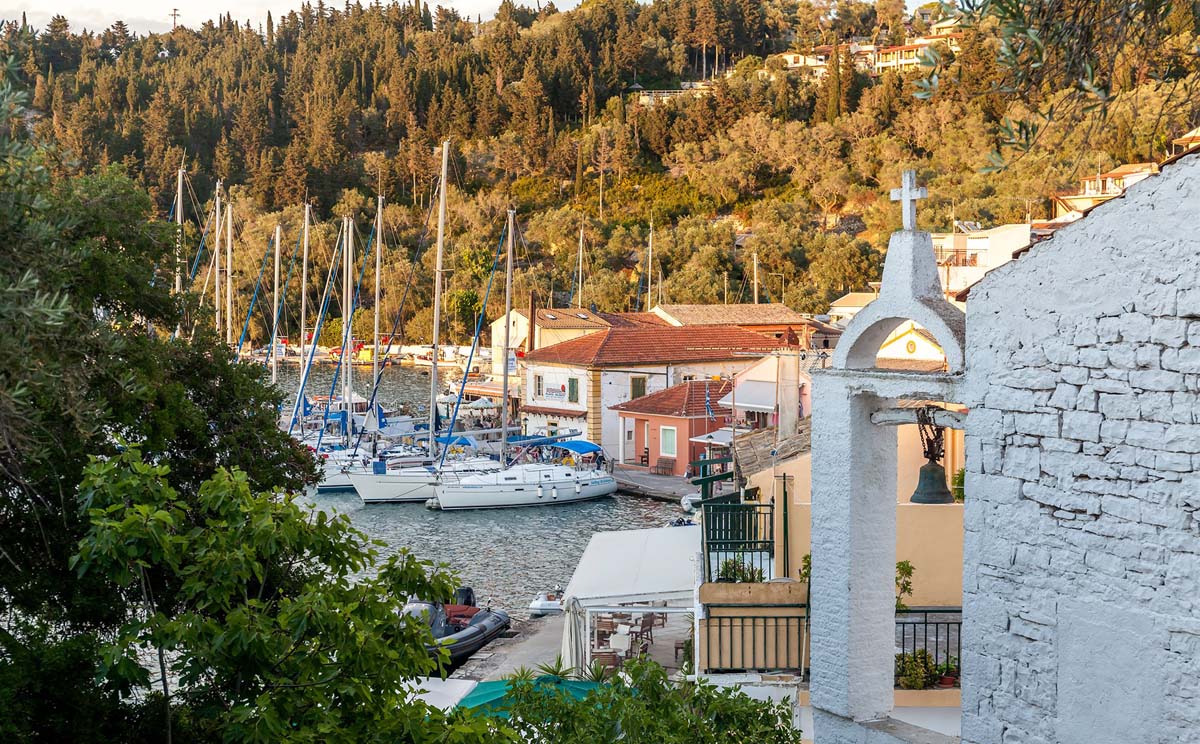
Day 5, Gaios to Lakka (Paxos), 12 miles
Today we will sail along the western side of the island of Paxos, admiring the magnificent cliffs that can be found on this side of the island. We pass by sea arches, caves, and hidden bays, all of which are open for exploration. We drop anchor in Lakka Bay at the northernmost point of the island to complete the day’s journey. This large bay with a sandy bottom is a popular sailing destination, and the small village has many picturesque spots. The town’s lighthouse can be found there, and Planos Beach is right behind it. Not far from the port of Lakka, hidden in a secluded, green valley, away from prying eyes, is the village of Grammatikeika, home to one of Paxos’ oldest and most beautiful churches, “The Ipapandi of Jesus” (from 1601).
Lakka is a typical seaside village, nestled between the blue waters of the Ionian Sea and the green expanses of olive groves. The small historic centre exudes a romantic atmosphere, with buildings that clearly show a Venetian influence. From here, you can go on many excursions or visit the island’s most beautiful beaches and caves.
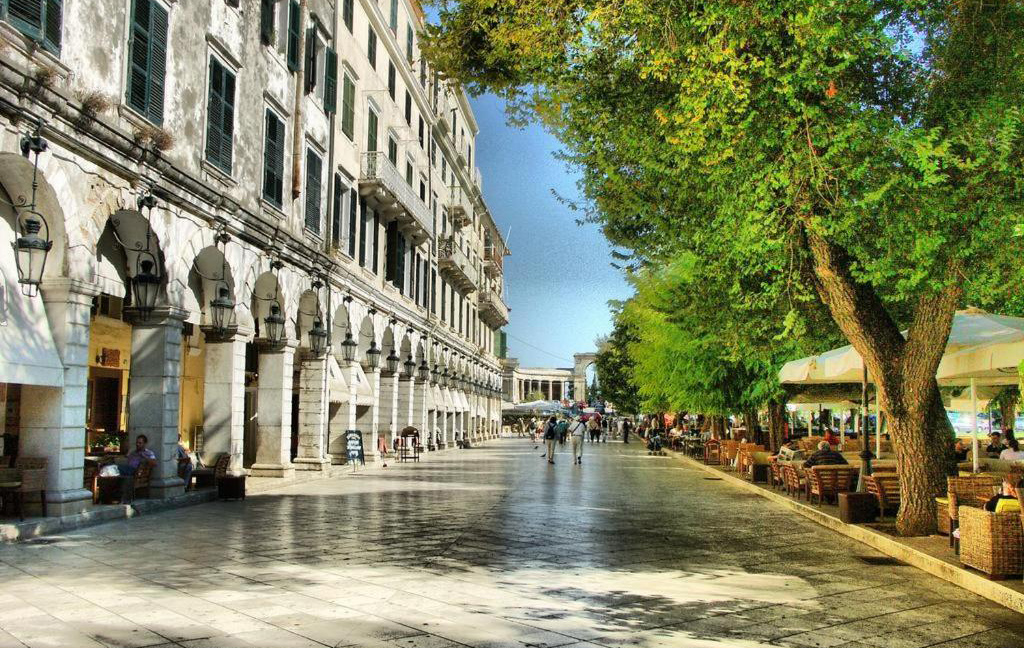
Day 6, Lakka – Corfù city, 27 miles
In the morning, we continue our journey north along the eastern side of Corfu, eventually arriving at the famous old town of Corfu. We can anchor in a large bay at the foot of a 6th-century fort. Every visitor is captivated by this city’s exciting and rich history, as well as its magnificent elegance.
Ancient Kerkira was built on this site, but the foundation stone for today’s city was laid by the Venetians, who ruled it between 1386 and 1797. This is evidenced by small squares and decorated fountains hidden behind opulent Orthodox churches and bell towers. The city is divided into two parts: the old and the new. Corfu’s old town has been on the UNESCO World Heritage List since 2007. Corfu was given the name Kastropolis (Castle city) because the city contains three historical castles.
The Liston, a magnificent street built by Napoleon in 1807 in imitation of Paris’s Rue de Rivoli, is the most spectacular architectural element of the old town. It runs along the wide Spianada (Esplanade) square, which is elegant and full of lively cafes. You can spend a few hours exploring the ancient buildings, defensive walls, and cosy cafes that adorn the city squares by following the labyrinth of narrow streets that lead inland. The old town quarter of Cambiello, the Royal Palace with the Museum of Asian Art, the Gorgon Medusa pediment with snakes in her hair at the Archaeological Museum, the church of St. Spyridon with unique ceiling paintings, the Byzantine Museum of Antivouniotissa, the Banknote Museum, and the City Gallery are the city’s main attractions.
The Achilleion Palace, located in Gastouri, a village about ten kilometres south of Corfu City, is well worth a visit and provides a panoramic view of the city in the north and the southern part of the island, which is surrounded by the Ionian Sea in the east. The palace was built at the suggestion of Austrian consul Alexander von Warsberg for Empress Elisabeth, also known as Sisi. After the tragic loss of her only son, Crown Prince Rudolf of Austria, in the Mayerling incident in1889, Sisi built this summer palace as a refuge a year later. Elisabeth’s favourite holiday destination was Corfu, and she desired a palace that reflected her admiration for Greece, its language, and its culture.
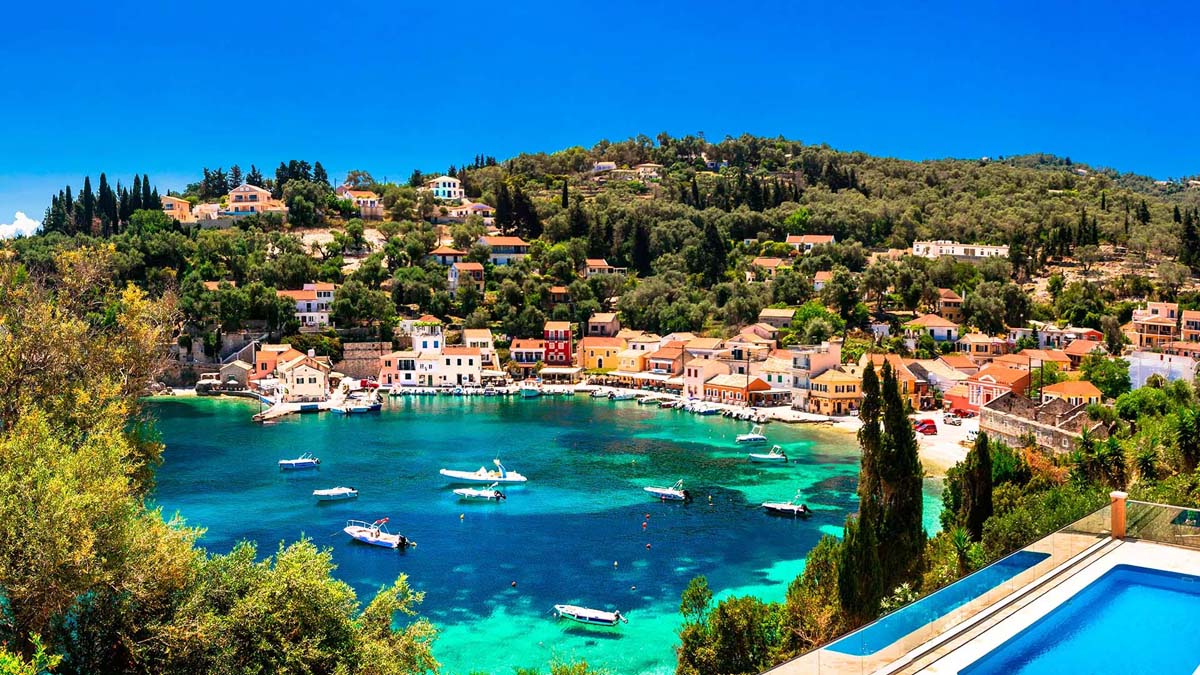
Day 7, Corfù city – Gouvia, 5 miles
The time has come to return to the starting point, namely the Gouvia marina. However, it is worthwhile to visit this modern, small town of only 600 inhabitants, which, in addition to two beautiful beaches between the harbour and the coast, houses the ruins of ancient Venetian shipyards from the 17th century, as it is built on the exact site of the former Venetian harbour in Govino Bay. The main beach is made of sand and pebbles and is small but lovely. The quaint Ipapandi Church, built in 1713 on a small island connected to the mainland by a narrow strip, can be seen from the beach. There are plenty of tavernas and restaurants serving Greek cuisine as well as Chinese, Thai, Italian, and even Mexican food for the hungry.
This region of Greece is well-known throughout the world for its natural beauty, rich history and tradition, and delicious cuisine.
Discover the best boat rental offers from Corfu
You May Also Like
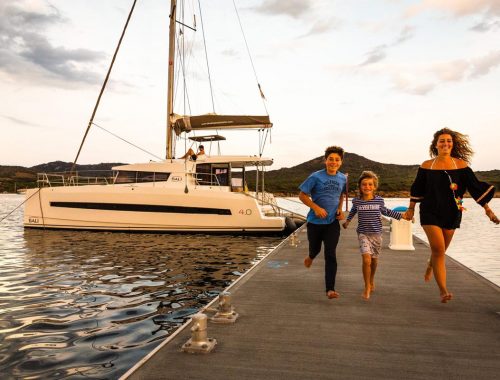
How to instil a love of sailing in our children and encourage them to go on sailing vacations
20/10/2022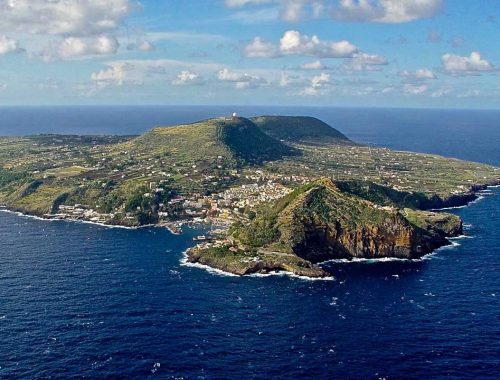
Ustica, the black and rebellious island with a gentle heart
15/12/2023